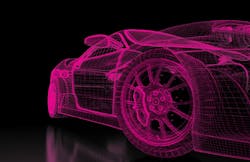March 17, 2021—Rural roadways have been a known struggle for autonomous systems due to their unpredictability, weather challenges, and more, but one company may have found a solution, propelling the industry forward with autonomous vehicles.
Neural Propulsion Systems announced just weeks ago the finished sensing system, NPS 500, behind its Zero Accidents Platform, which aims to prevent all transportation accidents. NPS combines the most advanced LiDAR and radar to alert drivers of potential dangers as many as 500 meters away.
ADAPT spoke with Behrooz Rezvani, founder and CEO of Neural Propulsion Systems, to get answers to your most burning questions.
What is NPS 500?
NPS 500 is an AI-driven, sensor-fusion system that has the ability to prevent crashes using a variety of sensors that monitor the vehicle.
When it comes to autonomous driving, Rezvani said there are two systems at play: perception and sensing. “Our contribution is in the sensing system, what we give is more time to the perception engine and we give it enough time to work properly,” he said.
How does NPS 500 work?
The NPS 500 consists of three major sensors: LiDAR, radar, and camera. Rezvani said NPS’ sensors are more sophisticated than others, “They cooperate and collaborate in a way that is redundant and they cover each other’s weaknesses,” he said, “They compensate for each other.”
NPS 500 functions using multi-band radar, “so it can see through buildings, adverse weather conditions like blizzards, and even penetrate through woods and vegetation to see the car coming ahead,” he said.
What should repairers know?
Rezvani said, when it comes to shop workers, first they should understand how the laser, lidar, and camera sensors work. While the equipment is durable, Rezvani said it is also sensitive and requires precise handling.
The NPS 500 is also self-scanning, which Rezvani said, “alerts technicians when there is an issue to the system.” In order to fix a self-identified issue on the system, Rezvani said technicians need to know how it operates.
He suggested technicians take introductory courses, learn the lingo, attend webinars, and get educated on the systems and sensors sooner rather than later.
“We should start talking to our technicians to familiarize them with these systems as time goes on,” he said.
To read the entire interview and learn more, head to the full story at ADAPT.
About the Author
NOLN Staff Reporters
The NOLN staff reporters cover the quick maintenance industry every day, from top to bottom. For news inquiries, please contact [email protected].
